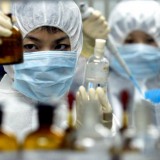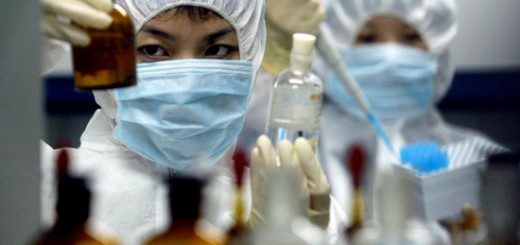Neural stem cells (NSCs) are self-renewing, multipotent stem cells that have capability to develop into multiple nerve cell types (e.g., neurons, astrocytes, and oligodendrocytes) and then generate nervous system.
Cell death is a characteristic of acute neurological disorders as well as neurodegenerative disease. The loss of cells is amplified by the lack of regenerative abilities for cell replacement and repair in the CNS. One way to circumvent this is to use cell replacement therapy via regenerative NSCs. The benefits of this therapeutic approach have been examined in Parkinson’s disease, Huntington’s disease, and multiple sclerosis.
Medical researchers from China have found that ginsenoside Rg1 can efficiently activate NSCs, implying Rg1 might be useful in the treatment of degeneragive brain diseases. The following is the research abstract published on “Chinese Journal of Traditional Chinese Medicine”.
[Study on molecular target promoting human neural stem cells of ginsenoside Rg1 by gene chip].
Zhongguo Zhong Yao Za Zhi (中国中药杂志). 2013 Aug;38(16):2701-5
Abstract
OBJECTIVE: To screen out main molecular target promoting human neural stem cells (NSCs) of ginsenoside Rg1 by using the gene chip technology.
METHOD: First, MTT assay was adopted to screen out the optimal concentration of Rg1-promoted NSC proliferation (120 mg x L(-1)). Then, on the 7th day after the Rg1-promoted NSC proliferation, the expression of target genes was observed by the gene chip technology. The most important target gene and signal transduction pathways were screened out through the data calculations.
RESULT: On the 7th day after the Rg1-promoted NSC proliferation, obtained 440 differential genes, 266 significantly upregulated genes and 174 significantly down-regulated genes. HES1 gene, CAMP (cyclic adenosine monophosphate)-PKA (protein kinase A) and PI3K (phosphatidylinositol 3 kinase)-AKT signal transduction pathways were closely related to the NSC proliferation.
CONCLUSION: The differentially expressed genes screened out by gene chip may provide new clues for studies on molecular mechanism of ginsenoside Rg1-promoted NSCs proliferation.
















































